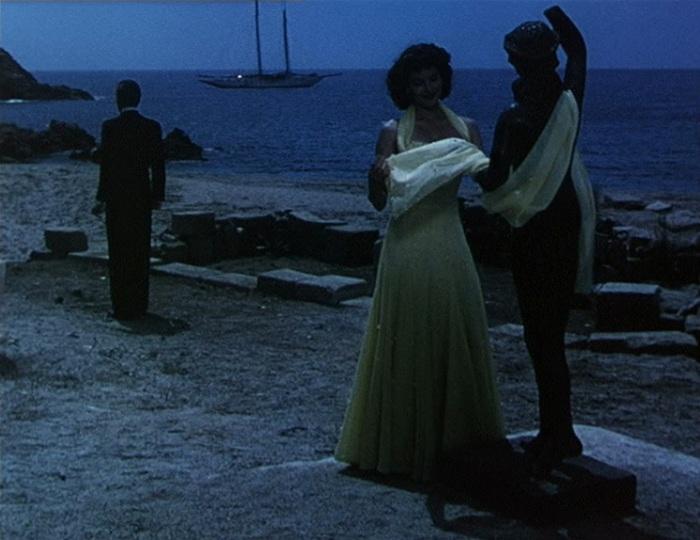
Sumptuous and strange, Pandora & the Flying Dutchman sets a potentially typical era romance drama adrift in a sea of the supernatural, an unusual mixture of sweeping romance and metaphysical bombast that really elevates the material to a mesmerizing level, assisted by the vibrant, gorgeous Technicolor cinematography from the great Jack Cardiff (the man who popped the clutch on the most eye-popping films of Michael Powell & Emeric Pressburger (A Matter of Life & Death, The Red Shoes and my beloved Black Narcissus).
In a Spanish fishing port in the early 1930s, a group of English expatriates, their focus squarely around icy femme fetale nightclub singer Pandora (Ava Gardner). She bewitches every man in her orbit, but coldly demands they sacrifice their greatest loves in exchange for her favor. She has impulsively betrothed herself to a land-speed record holder (Nigel Patrick) after she convinced him to destroy his beloved car. Her interest dissipating, her focus is drawn to a mysterious ship in the bay, piloted by one Hendrick van der Zee (James Mason), who intrigues her, unaffected by her charms. Pandora’s only true associate, the archaeologist Geoffrey Fielding (Harold Warrender), has come across a notebook written in Old Dutch that indirectly identifies van der Zee as the accursed Flying Dutchman, a 16th-century ship captain who killed his wife (a woman bearing a strong resemblance to Pandora) and condemned God at his murder trial, cursing him to a thousand lifetimes wandering the world’s waterways looking for true love and a woman who would die for him to break the spell.
The stars of the show here are the stately direction from Albert Lewin, Jack Cardiff’s aforementioned photographic glory, and that sense of off-kilter atmosphere, encapsulated by the star-engorging turn by Ava Gardner, who had just come to fame thanks to Show Boat and now had a real forum to emphasize her gifts; her floating, ethereal presence and a voice so breathy it registers as otherworldy enflame the proceedings, but she’s also able to project a kind of curious vulnerability that keeps the film tethered, and dimensionalizes Pandora, simultaneously a mythical being and a troubled woman. James Mason made a career out of his similar uncommonness, and even if they lack typical romantic chemistry, the transcendental scope of the proceedings keep it rapturously locked-in.
Pandora and the Flying Dutchman is not only an atypical romance drama, it’s unlike almost anything else I’ve ever seen. The only mainstream film of its era that really compares from a storytelling disposition is Mel Ferrer’s Green Mansions with Audrey Hepburn as a forest girl enchanting an explorer, but that film was a bit too shapelessly ramshackle, lacking the ideas to keep from running out of steam quickly. Pandora and the Flying Dutchman has a focus, a soul, and pairs the alien visual extremity of Black Narcissus with an actual supernatural tint, and rockets away in a way unlike any other I’ve come across.
[Grade: 8.5/10 (B+) / #5 (of 20) of 1951]
